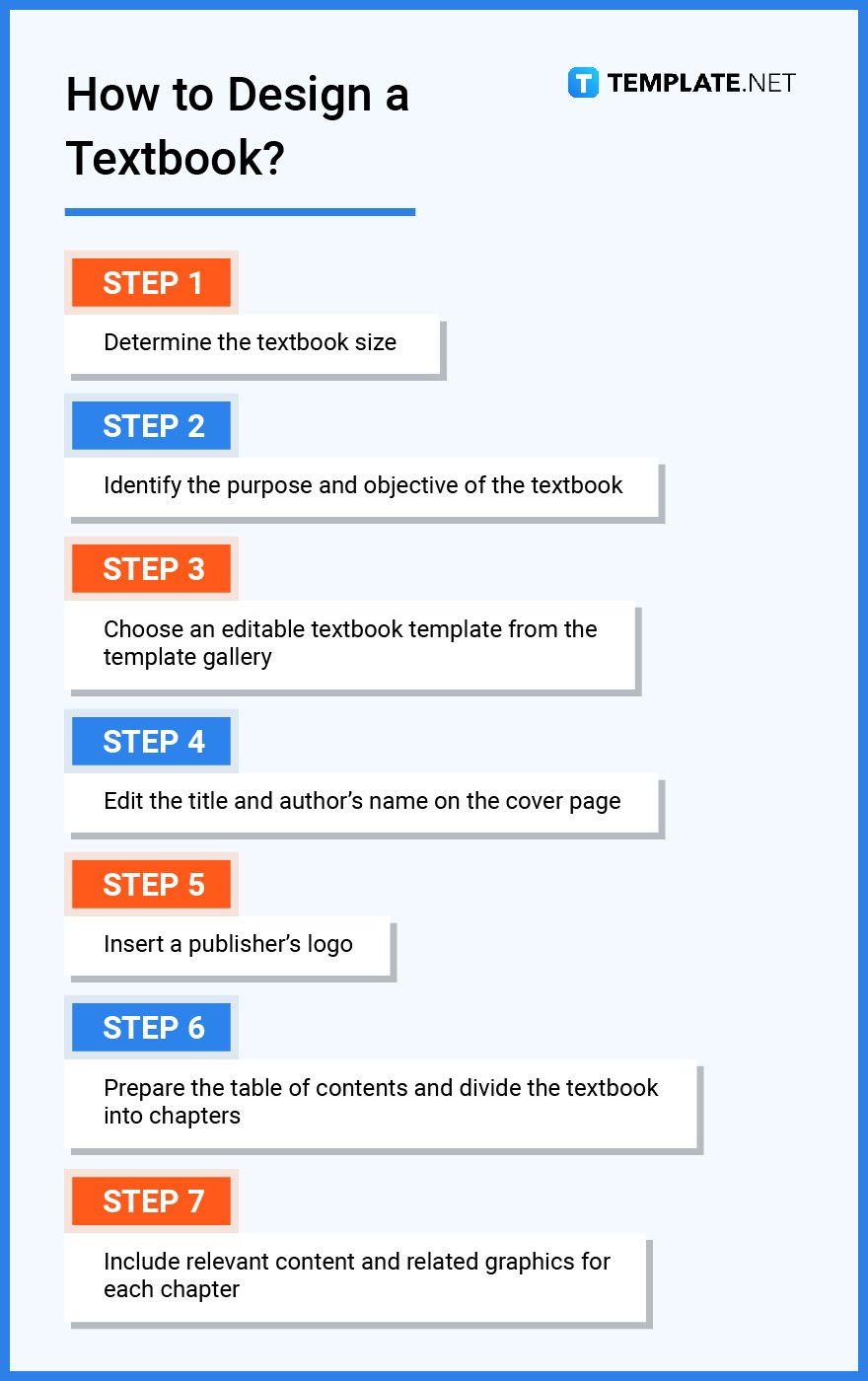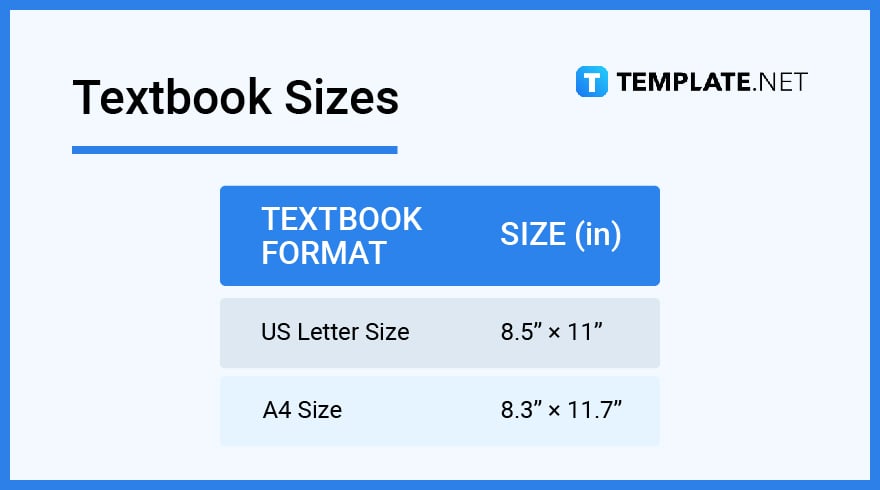![How To Create Meeting Minutes in Google Docs [Template + Example]](https://images.template.net/wp-content/uploads/2023/07/How-To-Make_Create-Meeting-Minutes-in-Google-Docs-Template-Example-788x443.png)
How To Create Meeting Minutes in Google Docs [Template + Example]
Meeting minutes Play a vital role in the recording of meeting information and details. In any kind of meeting, there is always…
Mar 21, 2024
Textbooks are a staple in formal education. From elementary education all the way to graduate school, students rely on textbooks to help them study and learn about different academic subjects.

A textbook is a work of written text whose primary purpose is to educate and inform people, particularly students.
Textbooks are comprehensive and are usually written in prose or have an expository or narrative style of writing.
A textbook is one of the most basic learning tools in and out of the classroom. It is a book that is particularly arranged in a logical, progressive order for students and teachers to follow. A textbook comprises different chapters that are all related to the main subject or theme of the textbook.
Whether you are a high school student or a university professor, a history textbook is a must for anyone who attends or teaches at a school. History is a core academic subject and is one of the most important topics to cover for a well-rounded education. The template below covers a key event in the 20th century- the Great Depression- which had significant effects on the decades preceding World War II.
A school textbook can cover dozens of disciplines and subjects. From economics, math, chemistry, language, to nursing, textbooks are required learning materials for formal education. The sample textbook below is a basic science textbook with a special emphasis on the different planets that make up the solar system.
A branch of science is health and nutrition. Dieticians, nutritionists, and wellness experts have the special task of writing textbooks that cover health-related topics. For example, the fitness textbook example below emphasizes the importance of a balanced and healthy diet in order to achieve overall well-being.
These days, a lot of learning material and resources can be found online. Additionally, topics related to the Information and Digital Age (such as social media) are already being published in textbooks. For instance, the digital textbook template below is about the art of blogging.
It is a widely known fact that medical school is anything but easy or simple. Medical students go through years (or even decades) of training- they undergo pre-med training, med proper, clerkship, residency, and further specialization training in their chosen field. A medical textbook is just one of the many different learning tools that med students use for their training.
A textbook can sometimes be just a comprehensive review of a certain topic or subject. Like a literature review, a textbook review compiles different information from various sources and puts them together in a single and accessible resource. The editable template below is a review of the post-World War II history of the United States.
Reading and studying textbooks are expected of students of all education levels. Textbooks not only serve as main references, but they also help guide a student’s pace and progression in his or her studies. And one effective way to study is by textbook note taking; it is an essential skill in developing good study habits.
Textbooks are one of the most fundamental education tools that are used across all grade levels. It covers all kinds of subjects and disciplines, but its purpose and importance remain constant.
A textbook is widely considered as a primary source of information, especially within the context of formal and traditional education. Students learn about different subjects by reading and studying textbooks. Teachers, on the other hand, base their lessons and classroom activities on school textbooks.
There are all kinds of ways to study and each one may have his or her own style of learning. A textbook facilitates learning in such a way that it provides a detailed outline of lessons and topics so that both student and teacher can follow the proper progression of learning. Like a syllabus, a textbook contains the curriculum or list of topics for everyone to be guided.
Professors, instructors and even tutors, are expected to come up with lesson plans before they can face a classroom full of students. There are tons of learning resources and material a teacher can use to craft their lesson plan. A textbook is one such tool; educators can prepare their lessons and teaching strategies based on information provided in a textbook.
A textbook is an important resource for teachers and educators. Educators do not simply read off the textbook as they teach; they must implement various methods and strategies to help students understand and apply the topic better. But by using a textbook, teachers can come up with all kinds of classroom activities based on facts and ideas found in the textbook.
A textbook, like any other book, is an excellent source of knowledge and information. And books designed to educate and inform help stimulate learning for students, and even non-students. A textbook is not just pure text, after all, but it can also contain infographics, figures, charts, and other visual aids.
Just like any book, a textbook should be given an appropriate title. The title on the cover page should be typed in bold, big, and legible letters for it to be easily readable.
A textbook cover page should be professional-looking but also interesting enough to attract the reader’s attention. The title, author’s name, and often a subtitle must be found on the cover page.
Always provide the complete name of the textbook’s author. A lot of textbooks are written by two or more authors, so make sure to name each one individually.
Another important part of a textbook is the publisher’s logo and/or name. It can be found at the top of the cover page, at the back of the book, or in the inside pages of the textbook.
The table of contents is a non-negotiable element of a textbook. It enables the reader to locate specific topics or subtopics in a lengthy and comprehensive textbook.
The contents of a textbook are usually divided into sections or chapters. This is to promote a logical progression of ideas and make it easier for the reader to follow.
As mentioned in previous sections, the ideal textbook should contain more than just text. Charts, infographics, tables, images, or even cliparts can help add character to an otherwise plain textbook and make it more engaging.

1. Determine the textbook size
2. Identify the purpose and objective of the textbook
3. Choose an editable textbook template from the template gallery
4. Edit the title and author’s name on the cover page
5. Insert a publisher’s logo
6. Prepare the table of contents and divide the textbook into chapters
7. Include relevant content and related graphics for each chapter

A textbook is a published book that is primarily educational and academic in nature; it is used in a classroom setting and to aid formal education.
A workbook is a type of book that mainly contains instructions, activities, and questions for students to answer in order to meet an academic or educational objective.
Textbooks are written, published work that inform, explain, and narrate facts and ideas about a particular subject wherein the contents are divided into different sections or subtopics.
A handbook is a compact and light book that contains a set of instructions or guidelines (e.g., employee handbook) and is much smaller in dimension compared to a regular book.
A notebook is a series of blank pages that are bound together for the purpose of writing or note-taking.
A textbook is pretty standard across all academic disciplines and educational institutions. Textbooks can cover so many academic topics and subjects but the textbook sizes would usually depend on the publisher, printer, or manufacturer.

Because of the many different subjects and topics that can be taught and learned in school, there are literally hundreds of textbook ideas and examples. The following examples are excellent blueprints for making your own textbook!
A good textbook should include content that is relevant and consistent and should also have a logical flow of ideas and/or topics.
A textbook method of teaching is a predictable form of learning wherein the teacher or instructor bases the lessons on a published book designed for a specific subject.
A textbook is an effective learning and teaching guide especially for newbie instructors because each topic is outlined and arranged in detail.
Textbook design is the overall format, layout, sequence and appearance of a textbook.
A textbook is a useful guide that both students and teachers can follow for a particular curriculum or during the course of a lesson or class.
A chapter in a textbook is a section or part in the book that is dedicated to a particular subtopic or subcategory of the main textbook subject.
Textbook writing is generally not considered as academic writing since they are published mainly for commercial purposes.
Students should have textbooks so they can have a study guide to follow and also so they can effectively keep track of the sequence of their lessons.
A textbook is a comprehensive book with written text that is usually expository in nature since they convey or relay information.
A textbook can cover all types of disciplines and subject matter; thus, the textbook theme will depend on the specific topic of the textbook.
![How To Create Meeting Minutes in Google Docs [Template + Example]](https://images.template.net/wp-content/uploads/2023/07/How-To-Make_Create-Meeting-Minutes-in-Google-Docs-Template-Example-788x443.png)
Meeting minutes Play a vital role in the recording of meeting information and details. In any kind of meeting, there is always…
![How To Make/Create a Manual in Google Docs [Templates + Examples] 2023](https://images.template.net/wp-content/uploads/2023/07/How-To-Make-Create-a-Manual-in-Google-Docs-788x443.png)
Manuals are essential instructional and reference guides. They help direct and inform an individual’s actions and also explain how to…
![How To Make/Create a Manual in Microsoft Word [Templates + Examples] 2023](https://images.template.net/wp-content/uploads/2023/07/How-To-Make-Create-a-Manual-in-Microsoft-Word-788x443.png)
Creating a manual can be a time-consuming and tedious task. However, manuals and other reference guides are necessary for organizations…
![How To Create a Legal Document in Google Docs [Template + Example]](https://images.template.net/wp-content/uploads/2023/07/How-To-Make_Create-a-Legal-Document-in-Google-Docs-Template-Example-2023-788x443.png)
When creating a legal document, there are a lot of things a person has to consider, and one of which is the…
![How To Make/Create a Contract in Microsoft Word [Template + Example] 2023](https://images.template.net/wp-content/uploads/2023/07/How-To-Make_Create-a-Contract-in-Microsoft-Word-Template-Example-2023-1-788x443.png)
Contracts can come in different forms and for different reasons but the most common thing is that when a company does business with…
![How To Create a Contract in Google Docs [Template + Example]](https://images.template.net/wp-content/uploads/2023/07/How-To-Make_Create-a-Contract-in-Google-Docs-Template-Example-2023-Step-788x443.png)
Contracts are an important part of any company or business, especially those that work with different companies or businesses. Companies…
![How To Make/Create a Report in Google Docs [Templates + Examples] 2023](https://images.template.net/wp-content/uploads/2023/07/How-To-Create-a-Report-in-Microsoft-Word-788x443.png)
A report is a comprehensive document that covers a wide array of topics from finance, research, incidents, feasibility studies, and…
![How To Make/Create a Report in Microsoft Word [Templates + Examples] 2023](https://images.template.net/wp-content/uploads/2023/07/How-To-Make_Create-a-Report-in-Microsoft-Word-Templates-Examples-20232-788x443.png)
A report is a document that contains information, data, analysis, finding, and other relevant information based on a specific topic.…
![How to Make/Create a Notebook in Google Docs [Templates + Examples] 2023](https://images.template.net/wp-content/uploads/2023/07/How-to-Make_Create-a-Notebook-in-Google-Docs-Templates-Examples-2023-788x443.png)
Notebooks always come in handy in writing important information or expressing our thoughts through written words. When we need a…